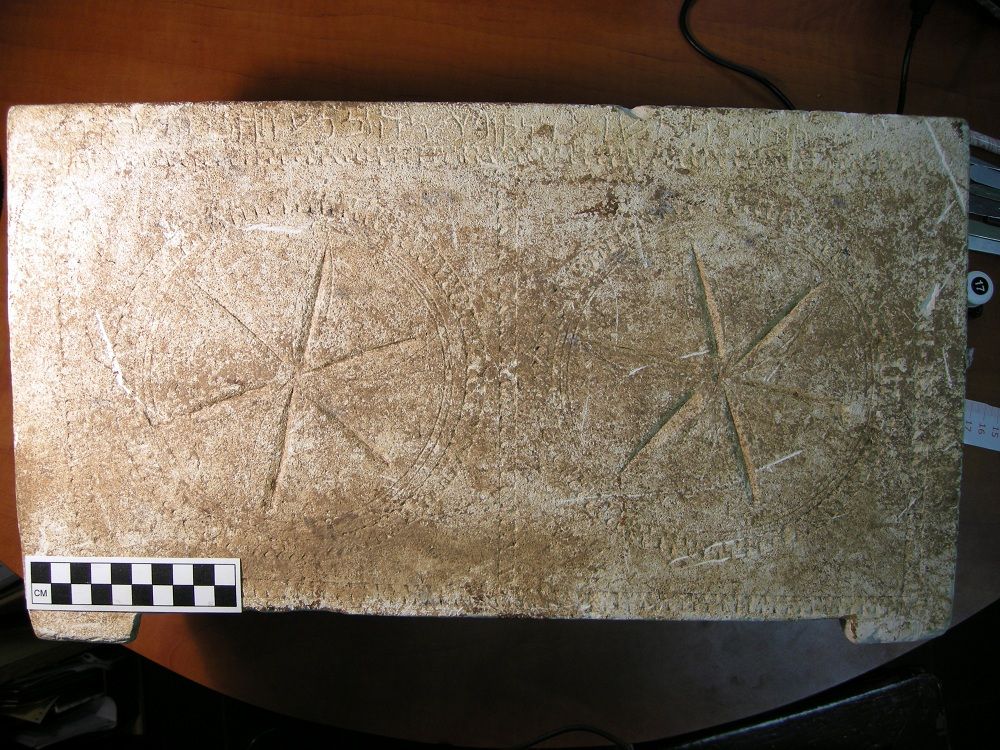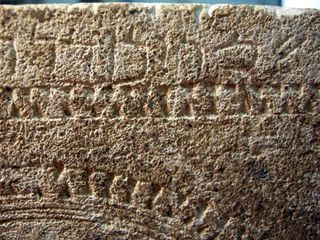Ancient Burial May Reveal Home of Biblical Figure

An ancient burial box recovered from antiquities looters three years ago contains a mysterious inscription that could reveal the home of the family of the figure Caiaphas, who is infamous for his involvement in the biblical story of the crucifixion of Jesus.
The burial box, also called an ossuary, was discovered in 1990, but the inscription was just recently verified as legitimate (and not the result of forgers trying to increase an artifact's value) by Yuval Goren of Tel Aviv University and Boaz Zissu of Bar Ilan University. The box is made of limestone, is covered in decorative rosettes and has an inscription.
In the Bible story of Jesus' crucifixion, a Jewish high priest named Caiaphas is said to have organized the plot to kill Jesus.
What is special about the inscription on this ossuary is that the deceased is named within the context of three generations; the inscription also includes a potential residence. The full inscription reads:

(Differences in spellings between Caiaphus and Caiaphas and Beth Imri and Beit Imri, below, are due to alternate translations.)
The Maaziah refers to a clan that was one of 24 orders of high priests during the second temple period, Goren said. While there are some records of the Caiaphus family in Talmudic sources (the central texts of Judaism) that detail their lives after they spread into the Galilee in A.D. 70, the reference to Beit Imri gives new insight into the family's location prior to their migration. [See pictures of burial box]
It is possible that Beit Imri refers to another priestly order, the researchers said in a statement, but it more probably refers to a geographical location, likely that of Caiaphus' family's village of origin.
Sign up for the Live Science daily newsletter now
Get the world’s most fascinating discoveries delivered straight to your inbox.
These ossuaries are traditionally buried in the ground and contain previously buried skeletal remains. Because they spend thousands of years in the ground, the researchers said they develop a distinct coating of microbes, algae and lichen, which can't be replicated by forgers.
"Beyond any reasonable doubt, the inscription is authentic," study researcher Goren said in a statement.
Previously discovered burial boxes, including one claiming to contain the bones of James, Jesus' brother, have been shown to be hoaxes. The researchers claim that the inconsistencies that plagued the box of James aren't present on this box.
The researchers aren't able to trace where the ossuary was discovered, since it had made the rounds in the illegal antiquities trade, but they believe it came from a burial site in the Valley of Elah, southwest of Jerusalem, the legendary location of the battle between David and Goliath. Beit Imri was probably located on the slopes of Mount Hebron, they said.
The finding was published in the current issue of the Israel Exploration Journal.
You can follow LiveScience staff writer Jennifer Welsh on Twitter @microbelover. Follow LiveScience for the latest in science news and discoveries on Twitter @livescience and on Facebook.
Jennifer Welsh is a Connecticut-based science writer and editor and a regular contributor to Live Science. She also has several years of bench work in cancer research and anti-viral drug discovery under her belt. She has previously written for Science News, VerywellHealth, The Scientist, Discover Magazine, WIRED Science, and Business Insider.
Most Popular




